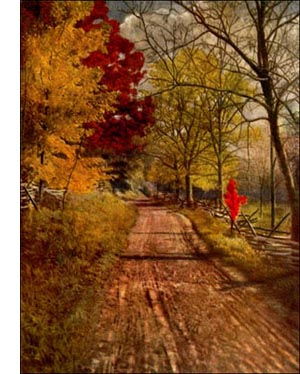Umbrella Tree
 Umbrella Tree (Magnolia tripetala, Linn.)-A roundtopped or conical tree 30 to 40 feet high, of irregular habit, with stout contorted branches and twigs. Bark thin, grey, smooth, with bristly warts. Wood close, soft, pale brown, weak; sap wood yellow. Buds: terminal, purplish with pale bloom, pointed, 1 inch long; lateral, round, short, reddish brown. Leaves i6 to 20 inches long, obovate, acute, entire, tapering narrowly to the stout petiole, smooth, thin, bright green. Flowers white, cup shaped, of unpleasant odour, 4 to 5 inches deep, soon spreading open, the 3 sepals recurved. Fruit elongated, Smooth, 2 to 4 inches long, rose coloured when ripe; seeds 1/2 inch long. Preferred habitat, swamp borders and banks of mountain streams. Distribution, Pennsylvania to southern Alabama, northeastern Mississippi and southwestern Arkansas. Nearly to the coast in South Atlantic States. Uses: An ornamental tree in temperate regions of Eastern States and Europe.
Umbrella Tree (Magnolia tripetala, Linn.)-A roundtopped or conical tree 30 to 40 feet high, of irregular habit, with stout contorted branches and twigs. Bark thin, grey, smooth, with bristly warts. Wood close, soft, pale brown, weak; sap wood yellow. Buds: terminal, purplish with pale bloom, pointed, 1 inch long; lateral, round, short, reddish brown. Leaves i6 to 20 inches long, obovate, acute, entire, tapering narrowly to the stout petiole, smooth, thin, bright green. Flowers white, cup shaped, of unpleasant odour, 4 to 5 inches deep, soon spreading open, the 3 sepals recurved. Fruit elongated, Smooth, 2 to 4 inches long, rose coloured when ripe; seeds 1/2 inch long. Preferred habitat, swamp borders and banks of mountain streams. Distribution, Pennsylvania to southern Alabama, northeastern Mississippi and southwestern Arkansas. Nearly to the coast in South Atlantic States. Uses: An ornamental tree in temperate regions of Eastern States and Europe.The flower of this magnolia is surrounded by an umbrella-like whorl of leaves. The whole tree, indeed, suggests an umbrella, so closely thatched is its dome with the glossy leaves. The twigs have a peculiar habit of striking out at right angles from an erect branch, then turning up into a position parallel with the parent branch. This feature, combined with the inevitable forking of each twig that bears a flower, gives the branches angularity and tends to destroy the symmetry of the dome.
The three recurved sepals are the distinctive feature of the flower. The whole tree is smooth, except when its young shoots unfold. The silky hairs are soon shed. Altogether, this is one of the trimmest and handsomest of our native magnolias. It attains large size in the Arnold Arboretum, proving it hardy in southern New England.